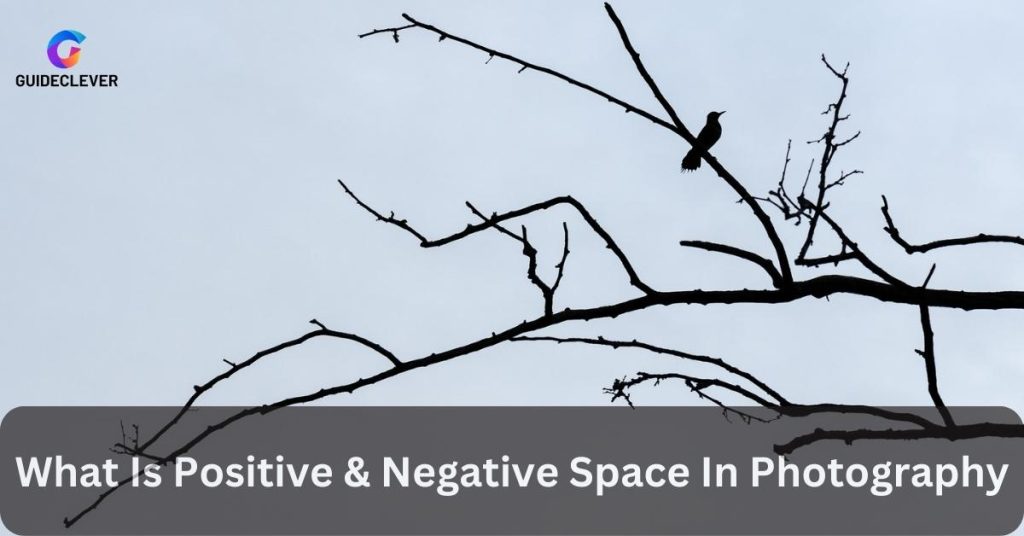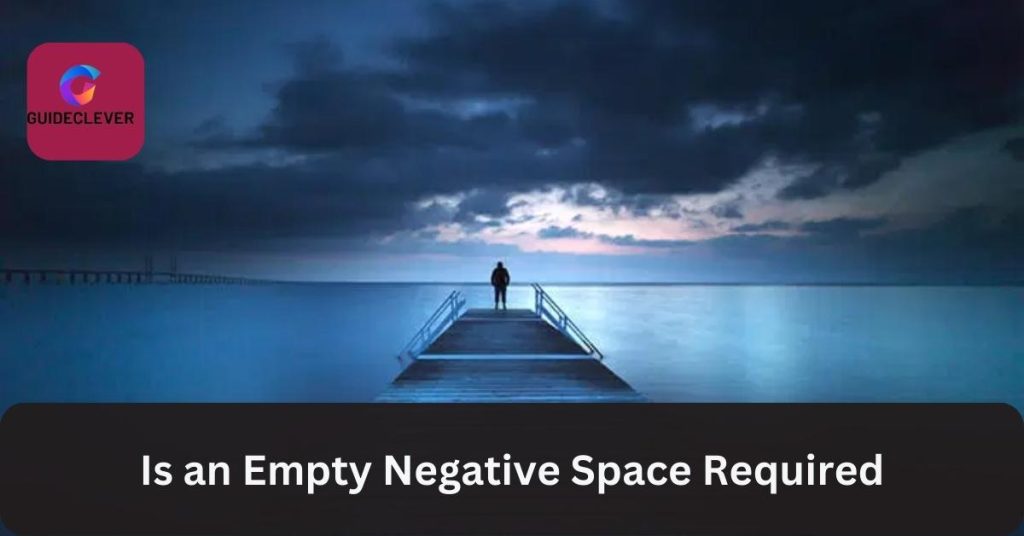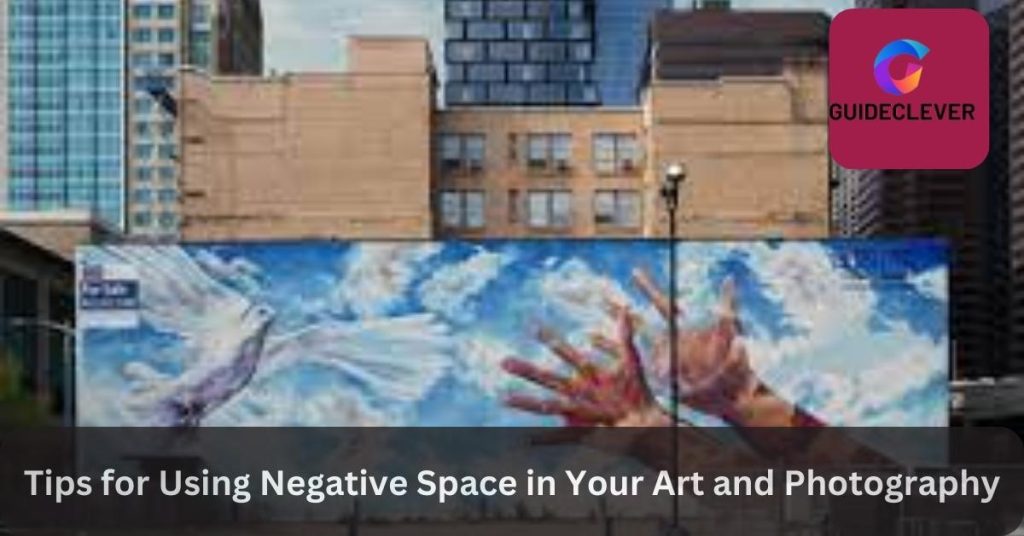Negative space in camera composition is a photographic concept of enormous relevance and force. Negative space is rather important when it comes to making pictures. In most cases, you will want to look at it very closely.
This article delves into the concept of negative space. It finds its meaning, significance, methods of application, and basic tips (4 tips) for use. We teach you how to use negative space (4 techniques) to your advantage in your photographs.
Follow our instructions and gather more knowledge on negative space in photography. Keep in touch, and stay tuned to the last line of this post. So let’s get started!
Contents
What Is Positive & Negative Space In Photography (Defining Both 2 Spaces)

In photography, the utilization of positive as well as negative space is important to the overall design. As well as the psychological impact of the picture. These thoughts explain how the centre (positive space) and the empty or unused area (negative space) in a picture connect to each other.
In photography, we need to learn to understand the rules of positive and negative space, therefore, let’s do that.
Positive Space
“Positive space” is a name for the part(s) of a picture that draws attention. This is the first thing that most people notice when they look at a picture. The positive area can be found in the following facts:
- A Different Size,
- Shape,
- Colour, Or
- Material Depending On What Is Being Shot.
It’s the most important thing, and it tells a story in the space of the picture.
Whether you want to highlight a person, an item, or some other feature, you should put your attention on the empty space. You may use them when framing a picture. When the subject is in the positive area, It takes centre stage in the image.
Negative Space
In photography, “negative space” is the region that isn’t the shot’s focus. The background and the absence of other elements give the topic more prominence. Photographers may increase their photos’ emotional effect.
If you want your audience to pay more attention, you should include negative space in camera composition.
The Importance of Negative Space (4 Things)

Enhancing Composition
Compositions that are well-balanced use negative space a lot. Giving the topic some space around it helps it stand out and creates a balance with the other parts.
Emphasizing the Subject
Photographers can use negative space to show how vital their subject is. Because the area makes a distinction, the main topic can stand out.
Conveying Emotion and Mood
When used in the design, empty space can give the impression of calm, solitude, and mystery. Due to the lack of competing visual elements, they can focus on the subject. As well as the feelings the picture is trying to show.
Storytelling
When used well, negative space can add depth to a story. It sets the scene or draws attention to important parts. When you tell an interesting visual story, it can make you feel like this:
- Alone,
- Excited, Or
- Small.
Techniques for Utilizing Negative Space (Basic 4 tricks)
Simplicity is key
Make sure everything you write is legible and simple to understand. Maintain the rest of the layout as simple and clean as you can so that the focal point stands out.
Balancing Elements
Place the subject matter closely to find the ideal location between both positive and negative space. Use the golden ratio or the principle of thirds to put together an image that stands out and relates to a story.
Contrast and colour
Use colour and contrast to draw attention to your topic by highlighting the white space around it. Try putting something with bright colours in front of a plain or black-and-white background to create a strong visual effect.
Scale and Perspective
Play around with different sizes and points of view to get the most out of a blank canvas. Play around with scaling and location to add more dimension and depth of field to your pictures.
Is an Empty Negative Space Required (Need to Know)

Contrary to popular belief, negative space need not be blank. It’s open to being stuffed with everything from shapes and colours to textures and patterns.
But black areas shouldn’t steal the show. Its purpose is to bring forth harmony, differentiation, and emphasis.
Some creative uses of “negative space” in the visual arts and photography are shown below.
Space in a painting may provide the illusion of depth and perspective. A painter may use negative space to suggest a fading road or mountain range in the background.
The surrounding space may frame a photograph’s subject. A photographer may use negative space to emphasize a particular element in a shot or its solitude.
Negative space is a tool used in graphic design for various purposes. It includes enhancing readability and adding aesthetic appeal. A graphic designer may make use of negative space in many ways. It also provides for the creation of forms and patterns and the enhancement of readability. It does this by placing white space around blocks of text.
Art and photography are both functional and pleasing. They often make use of negative space. Artists and photographers may produce by learning to use negative space these things:
- More Dynamic,
- Balanced, And
- Fascinating Works.
You may also learn more from troubleshooting common webcam problems.
4 Tips for Using Negative Space in Your Art and Photography

Here are 4 additional tips for using negative space in your art and photography:
- Try out various arrangements. Experiment with moving your subject about the frame to discover how the empty space affects the final picture.
- Observe the forms and outlines in the white space. Do you see any neat shapes or patterns? Is it possible to convey motion or a feeling of where you’re going by strategically using white space?
- Create harmony and contrast by using white space. Equally important are the areas of negative space in a well-balanced picture. Negative space may be filled with contrasting following things;
- Colours,
- Textures, or
- Forms to provide visual interest.
- It’s okay to have some white space. The finest use of negative space is when it is left blank.
Final Say on Negative Space in Camera Composition
There are a lot of ways to use “negative space” in photos. Negative space is a creative tool that could help you make your stories more interesting. It does this through your pictures by making the viewer look at and feel different things.
Keep in mind that an image’s energy comes from how the subject interacts with its surroundings. Use the negative space to get the most out of your picture. Maintain your talents; emptiness and negativity are all around you. The more images you capture, the simpler it is going to be to identify and use.



3 thoughts on “Power of Negative Space in Camera Composition – 4 Tips &Tricks”